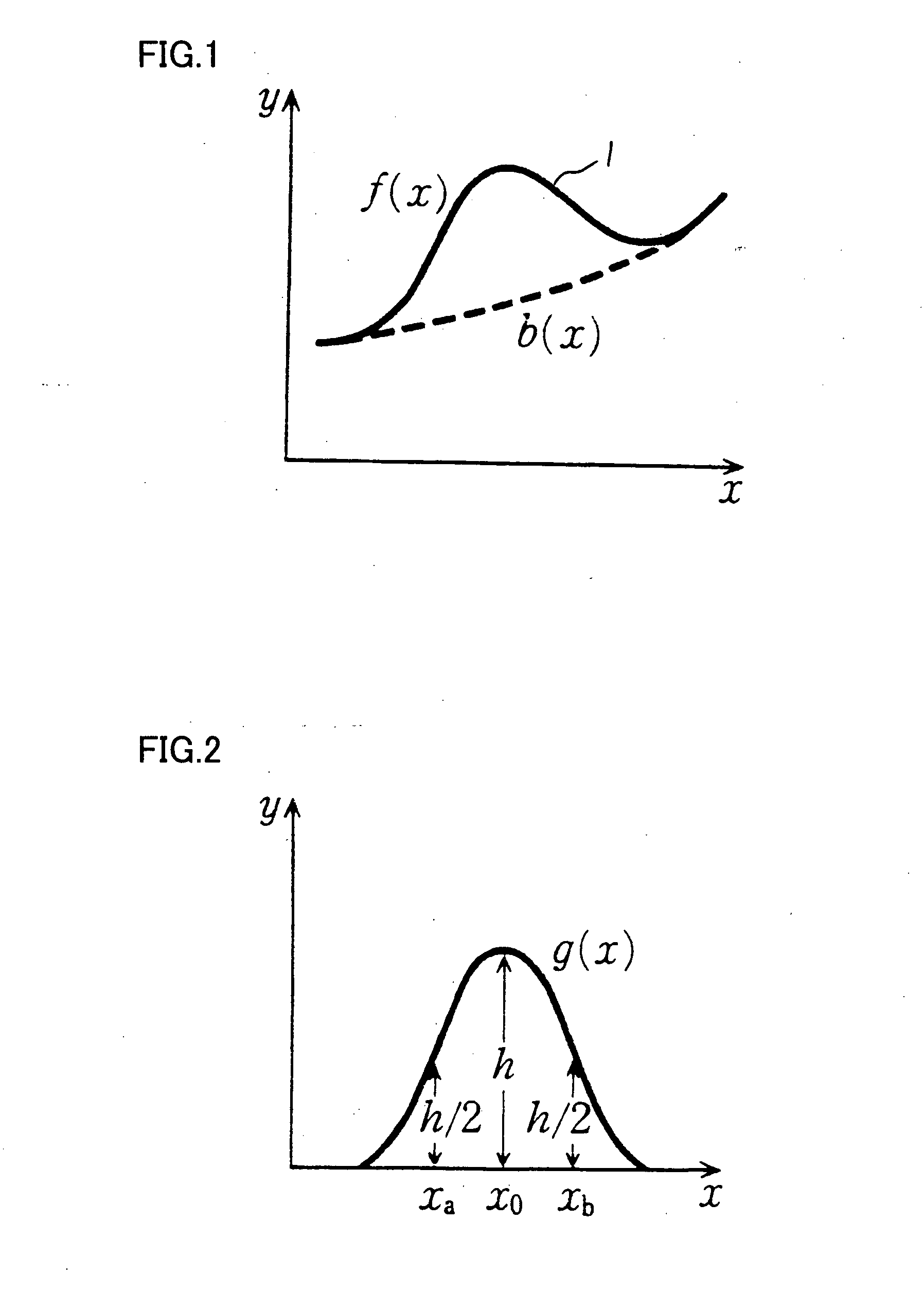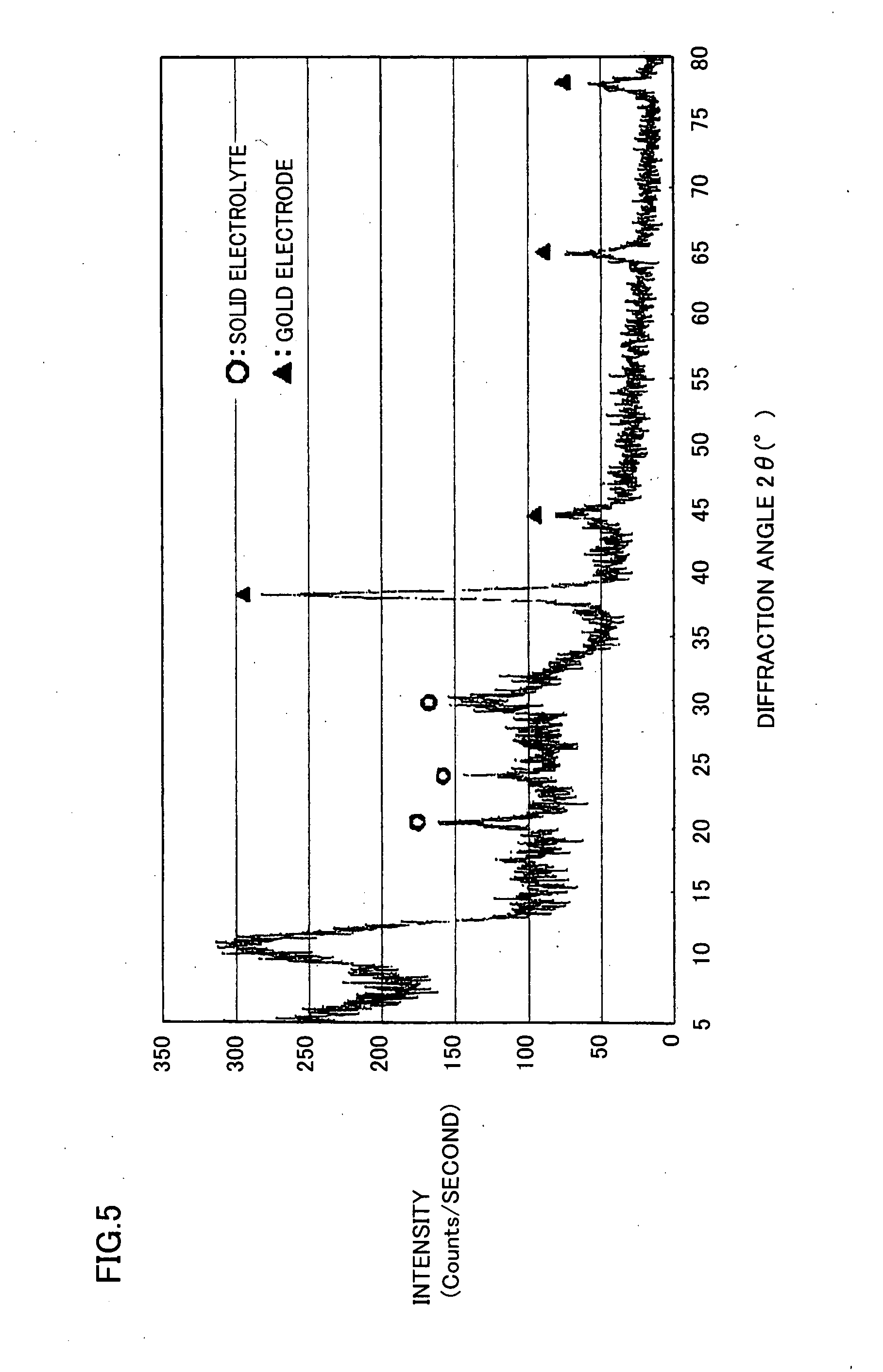Solid electrolyte and method of producing the same
a solid electrolyte and electrolyte technology, applied in the direction of non-aqueous electrolyte cells, non-metal conductors, cell components, etc., can solve the problems of lithium secondary battery explosion risk, temperature rise, and explosion risk of lithium secondary batteries, and achieve low electron conductivity, high ion conductivity, and favorable withstand voltage properties
- Summary
- Abstract
- Description
- Claims
- Application Information
AI Technical Summary
Benefits of technology
Problems solved by technology
Method used
Image
Examples
example
[0061]Under the following procedure, a solid electrolyte containing lithium, phosphorus, sulfur, and oxygen was formed on a base material by a laser abrasion method.
[0062]Initially, there was prepared a silica glass substrate having a square surface with a side of 25 mm, and a thickness of 1 mm. The silica glass substrate was fixed to a base material support in a laser abrasion film forming apparatus.
[0063]A starting raw material was fabricated by mixing 1.1 g of lithium sulfide (Li2S) powder and 2.4 g of phosphorus sulfide (P2S5) powder in a glove box filled with argon gas having a dew point of −80° C., and pouring the mixed powders into a mold for pressure molding to obtain a pellet having a diameter of 20 mm.
[0064]The starting raw material was removed from the glove box while prevented from being exposed to air, and fixed at a target holder in the laser abrasion film forming apparatus.
[0065]Next, a pressure in the laser abrasion film forming apparatus was adjusted to 1×10−2 Pa, a...
PUM
| Property | Measurement | Unit |
|---|---|---|
| Temperature | aaaaa | aaaaa |
| Temperature | aaaaa | aaaaa |
| Temperature | aaaaa | aaaaa |
Abstract
Description
Claims
Application Information
 Login to View More
Login to View More - R&D
- Intellectual Property
- Life Sciences
- Materials
- Tech Scout
- Unparalleled Data Quality
- Higher Quality Content
- 60% Fewer Hallucinations
Browse by: Latest US Patents, China's latest patents, Technical Efficacy Thesaurus, Application Domain, Technology Topic, Popular Technical Reports.
© 2025 PatSnap. All rights reserved.Legal|Privacy policy|Modern Slavery Act Transparency Statement|Sitemap|About US| Contact US: help@patsnap.com



